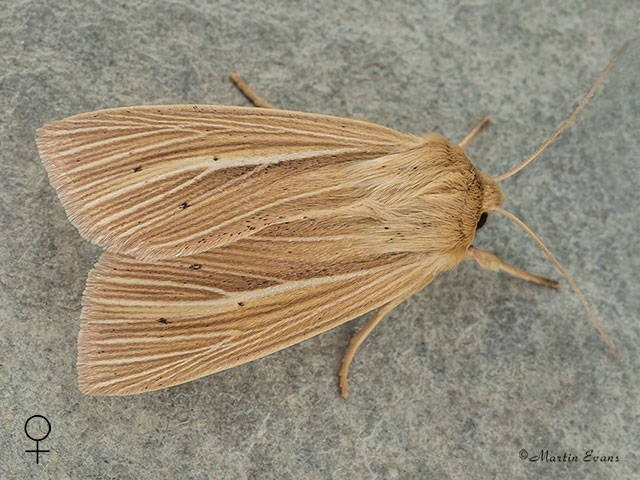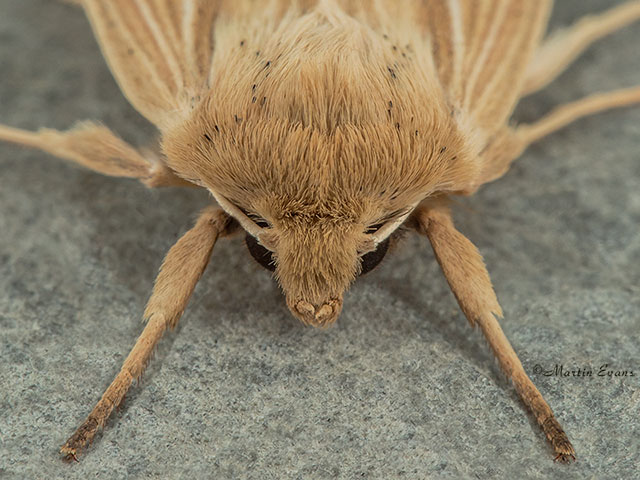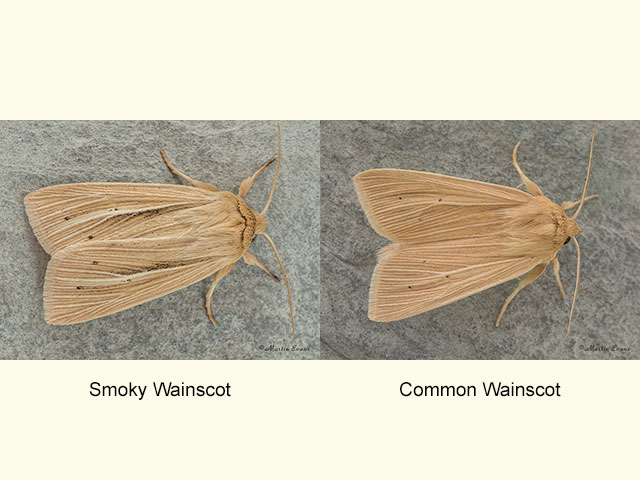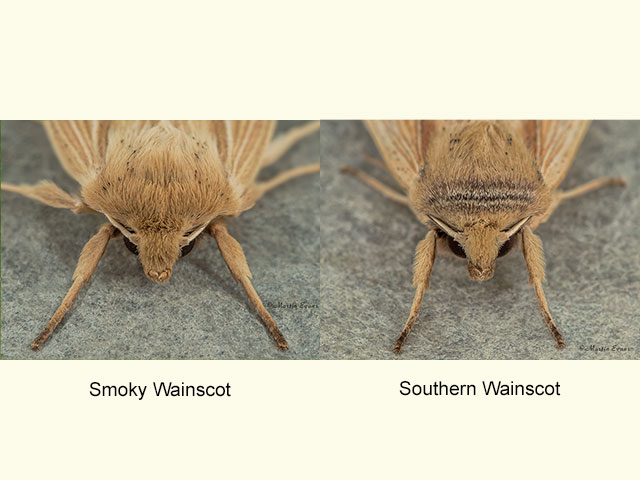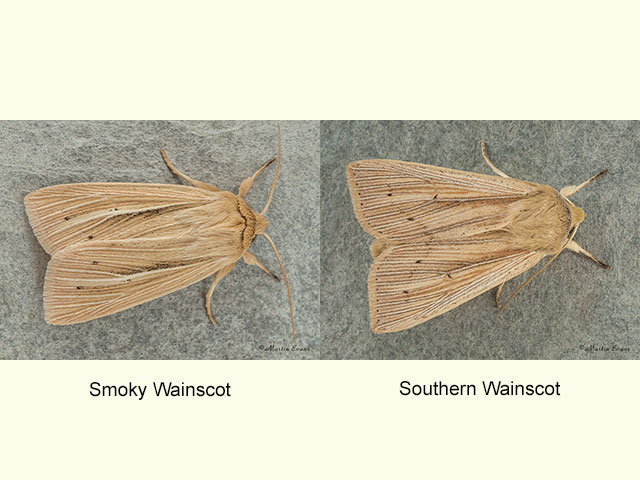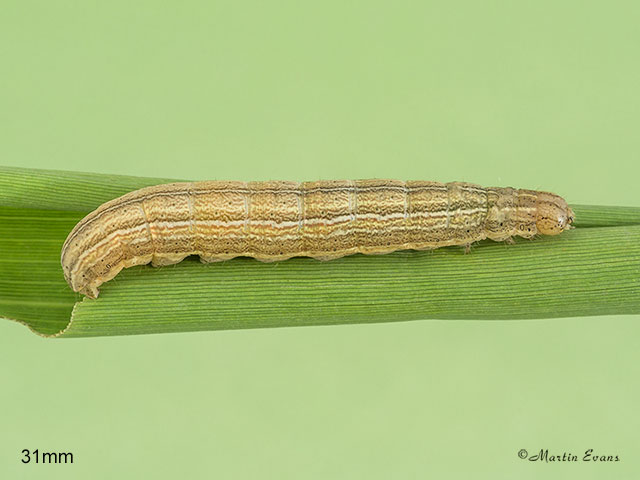Noctuidae
73.293 Smoky Wainscot Mythimna impura (Hübner, [1808])
Common
Similar species: Common Wainscot Mythimna pallens lacks the dark suffusion of scales following the main vein of the forewing from the base to the outer veins of the wing. It also has a white upperside to the hindwing rather than grey and a very pale grey underside to the forewing rather than dark grey. Southern Wainscot Mythimna straminea has a triple band across the forehead and a well developed row of dots along the outer central cross-line of the forewing.
Forewing: 14 to 18mm
Habitats: Grasslands including downland, rough grassland, grassland on coastal cliffs, sand-dunes, wasteground, woodland rides and clearings, gardens and occasionally in bogs and on moorland.
Habits: The moth nectars at ragwort and other flowers and is attracted to sugar and light.
Foodplant: The nocturnal larva feeds on Cock's-foot, Annual Meadow-grass, Common Reed, Hairy Wood-rush, Tufted Hair-grass and other grasses. It hides at the base of the stems during the day and pupates in a cocoon under the soil.
On the European mainland it has also been recorded feeding on False Oat-grass, Upright Brome, Meadow Foxtail, Purple Moor-grass and Reed Canary-grass.

